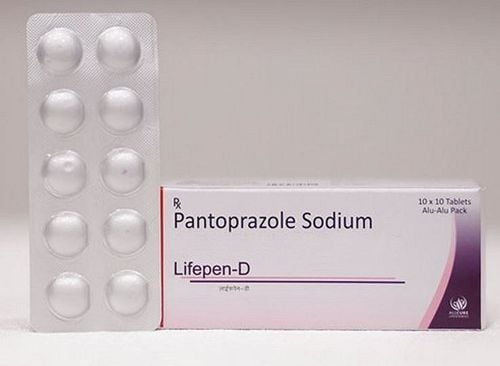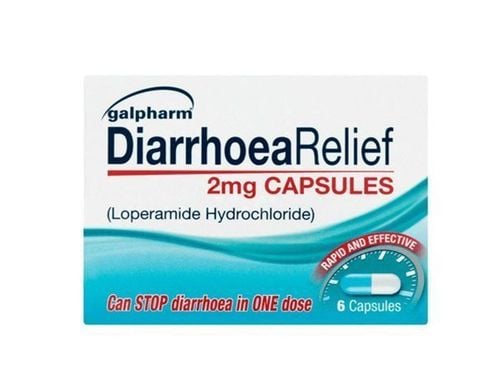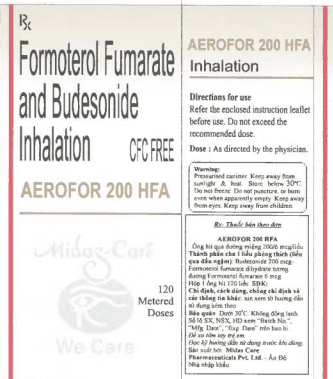This is an automatically translated article.
Posted by Master, Doctor Mai Vien Phuong - Department of Examination & Internal Medicine - Vinmec Central Park International General Hospital
1. Overview of Reflux esophagitis (also known as Gastroesophageal Reflux)
Gastroesophageal reflux disease (GERD) is a common gastrointestinal (GI) disease with worldwide prevalence and high prevalence in Western countries. Tissue damage associated with gastroesophageal reflux disease ranges from esophagitis to Barrett's esophagus and adenocarcinoma of the esophagus; The troubling symptoms of reflux can be esophageal (regurgitation, regurgitation) or extraesophageal. Gastroesophageal reflux disease can be further classified by the presence of an erosive stain on endoscopic examination (Erosive Reflux Disease [ERD] and Non-Erosive Reflux Disease [NERD]).
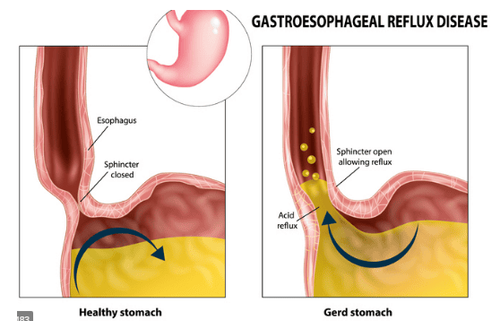
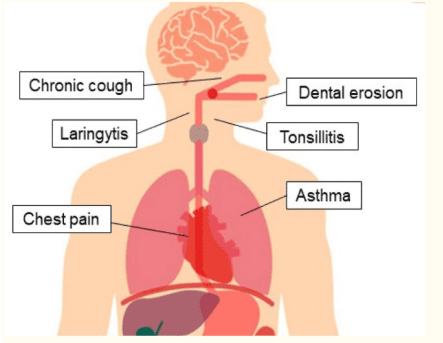
2. What is chest pain associated with gastroesophageal reflux disease?
Chest pain associated with GERD is the most frequent atypical manifestation of GERD. Although the Montreal Classification considers noncardiac chest pain an esophageal syndrome, we discuss it separately with the most common symptoms of typical GERD, such as heartburn and vomiting. regurgitation, due to similarities in diagnosis and treatment with extraesophageal manifestations.
Gastroesophageal reflux disease-associated chest pain is defined as recurrent posterior pain radiating to the back, neck, jaw, or arms, which can last from minutes to hours and is caused by exposure. with esophageal acidosis.
3. What is chest pain of non-cardiovascular origin?
When chest pain is not of cardiovascular origin, it is defined as noncardiac chest pain. Noncardiac chest pain includes heterogeneous causes of varying severity: Musculoskeletal, pulmonary (pneumonia, pulmonary embolism, lung cancer, sarcoidosis, pneumothorax and pneumothorax), pleural effusion), vascular (aortic disorders, pulmonary hypertension), drug-related, psychological, and gastrointestinal disorders. Of these, the most common cause of noncardiac chest pain is gastroesophageal reflux disease.
Focusing on epidemiology, Noncardiac chest pain affects both sexes equally, although women tend to consult a health care provider more often than men. As you get older, cardiac chest pain is more common, and then the incidence of noncardiac chest pain decreases. Chest pain is a common presentation to emergency departments, although only 25% of people with this symptom go to the hospital.

4. Differential diagnosis of chest pain associated with gastroesophageal reflux disease
Chest pain associated with gastroesophageal reflux disease should be differentiated from noncardiac chest pain due to esophageal peristalsis, visceral hypersensitivity, and disorders of gut-brain interaction such as functional esophageal angina, hypersensitivity due to reflux and functional heartburn.
Esophageal motility disorders with an increase in amplitude and duration of esophageal contractions, causing pain. Because esophageal manometry Manometry can measure these contractions, identifying pressure changes along the entire esophageal tract. Various peristaltic abnormalities are associated with chest pain: Lower esophageal sphincteric disorder, nonspecific esophageal motility disorder, hypercolic, distal esophageal spasm, and angina pectoris. . A correlation in time between continuous contractions of the longitudinal esophageal muscle and esophageal chest pain has been demonstrated.
Functional chest pain
Functional chest pain accounts for more than one third of diagnosed patients Noncardiac chest pain related to the esophagus; Esophageal hypersensitivity, with painful sensations from normal stimuli, is the proposed mechanism to explain this condition. Treatment goals include symptom control and quality of life improvement, the use of neuromodulators (such as tricyclic antidepressants, selective serotonin reuptake inhibitors), alternative medicine, and alternative medicine. supplements, and psychological interventions.
Patients with reflux hypersensitivity who have clinical symptoms during reflux episodes are exposed to normal esophageal acid; The mainstay of treatment is esophageal neuromodulators, while surgical antireflux management may be used in selected cases. Medication and behavior modification to reduce reflux events are always recommended.
It should be noted that functional heartburn and reflux hypersensitivity may overlap with gastroesophageal reflux disease.
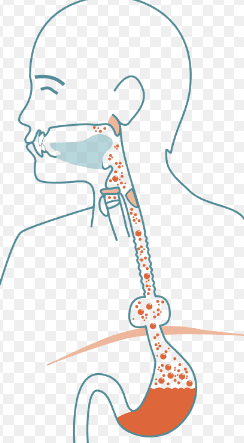
Conclusion
The diagnosis of extraesophageal manifestations associated with gastroesophageal reflux disease is not simple and is often a diagnosis of exclusion. Esophagogastroduodenoscopy plays a secondary role, more useful if alarming symptoms are present. 24 h esophageal pH monitoring is relevant in the diagnosis of extraesophageal manifestations. This test allows the diagnosis of acid reflux events in the esophagus and, using pH impedance monitoring, the reflux of both acidic and non-acidic materials into the esophagus can also be identified. The PPI test is often used as the first diagnostic step. In atypical cases, diagnostic tools such as laryngoscopy and bronchoscopy may be useful to detect abnormalities associated with reflux lesions.
Currently, Vinmec International General Hospital is a prestigious address trusted by many patients in performing diagnostic techniques for digestive diseases, diseases that cause chronic diarrhea, Crohn's disease, gastric mucosa Esophageal ectopic... Along with that, at Vinmec Hospital, screening for gastric cancer and gastric polyps is done through gastroscopy with an Olympus CV 190 endoscope, with NBI (Narrow) function. Banding Imaging - endoscopy with narrow light frequency) results in clearer images of mucosal pathology than conventional endoscopy, detecting ulcerative colitis lesions, digestive cancer lesions Early stage...
Vinmec Hospital with modern facilities and equipment and a team of experienced specialists who are always dedicated in medical examination and treatment, customers can rest assured with internal services. gastroscopy, esophagoscopy at Vinmec International General Hospital.
Please dial HOTLINE for more information or register for an appointment HERE. Download MyVinmec app to make appointments faster and to manage your bookings easily.
Reference1. Marilena Durazzo, Giulia Lupi, Extra-Esophageal Presentation of Gastroesophageal Reflux Disease: 2020 Update, J Clin Med. 2020 Aug; 9(8): 2559.
Vakil N., Van Zanten S.V., Kahrilas P., Dent J., Jones R., Global Consensus Group The Montreal definition and classification of gastroesophageal reflux disease: A global evidence-based consensus. Am. J. Gastroenterol. 2006;101:1900-1920. doi: 10.1111/j.1572-0241.2006.00630.x. [PubMed] [CrossRef] [Google Scholar]





